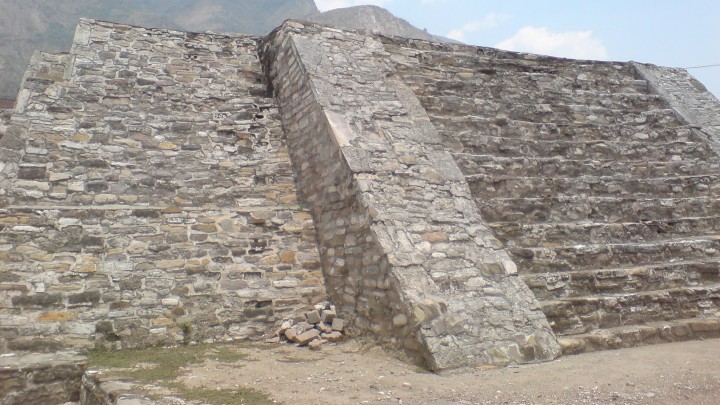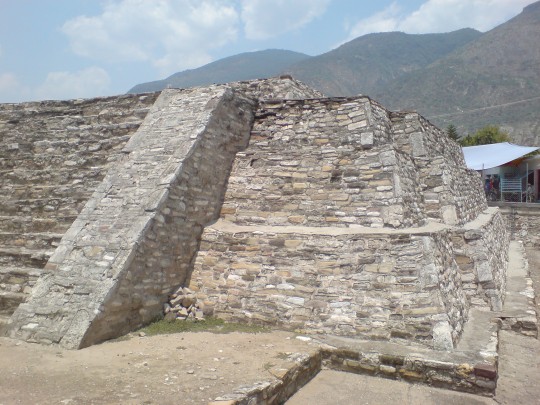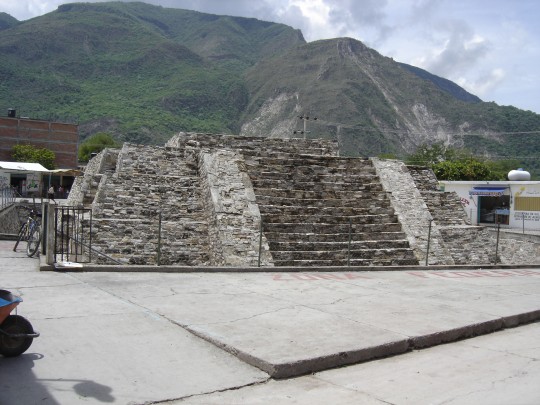The town of Huamuxtitlán is found in the depression created by the gully of the river Tlapanec and the mountain chain rising to its east and west. The climate is tropical. In the center there is an archeological site with a pyramidal structure measuring 70 foot long by 60 foot wide and 17 foot high, with three sloped volumes and access via a stairway between two balustrades on the west side.
In general terms Huamuxtitlán appears to have always had an abundance of water, not just because of its proximity to the river, but because of the nearby lakes and springs to the west side of the settlement, which might have enabled human occupation from the earliest times.
Situated on the shore of the river Tlapanec, this archeological site is what remains of a core area settled up to 1200 in the Postclassic by Tlapanec groups who traded with the Mixtecs. With the arrival of the conquering armies of Nezahualcoyotl in the second half of the fifteenth century, Huamuxtitlán became a local bastion of the Triple Alliance, as can be seen from the architecture and offerings reflecting the warlike ideology of the center of Mexico.
Only the main temple survives from Huamuxtitlán’s time under the Triple Alliance, and this is in the form of a pyramid, as the pre-Hispanic ceremonial and residential areas are covered by the buildings of the modern town. The pyramidal structure consists of five stepped volumes which reach a height of nearly 20 feet with a base that is 66 feet on each side. There is a stairway in the center of the west facade. The final volume of the pyramid has a 26 foot by 20 foot platform upon which a temple once stood. The excavations carried out by Guadalupe Martínez Donjuan in 1979 and 1980 uncovered the foundations of the final stage of construction which was completely dismantled to use the stone to build a sixteenth century church. According to the investigations of Rafael Rubí and Raúl Vélez, by that time Huamuxtitlan was part of the tributary province of Yohualtepec. The greater part of this province was located in the present day state of Oaxaca but it also covered small parts of Puebla and Guerrero.
-
+52) (747) 471 7121
-
This email address is being protected from spambots. You need JavaScript enabled to view it.











